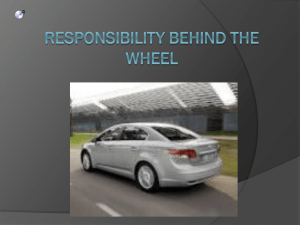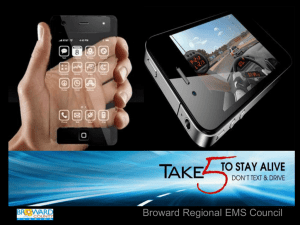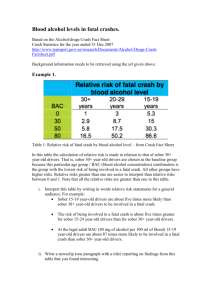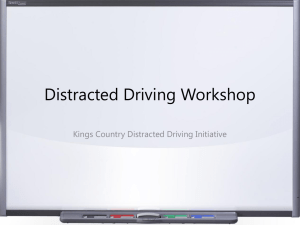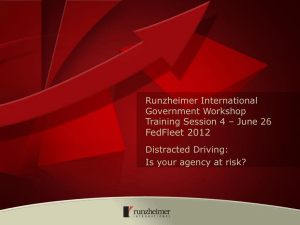10 Deadliest Driving Distractions Number 2 Is!
advertisement
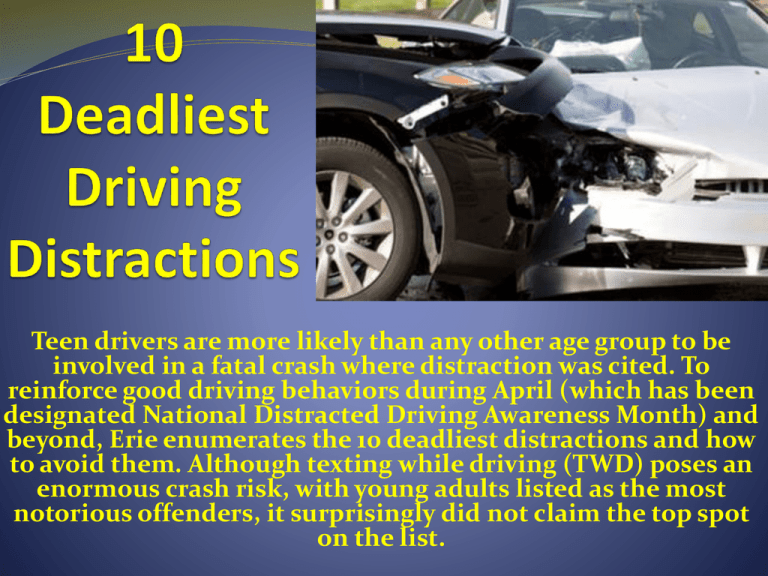
Teen drivers are more likely than any other age group to be involved in a fatal crash where distraction was cited. To reinforce good driving behaviors during April (which has been designated National Distracted Driving Awareness Month) and beyond, Erie enumerates the 10 deadliest distractions and how to avoid them. Although texting while driving (TWD) poses an enormous crash risk, with young adults listed as the most notorious offenders, it surprisingly did not claim the top spot on the list. 10. Smoking-related (includes smoking, lighting up, putting ashes in tray) Of the more than 65,000 people killed in car crashes over the past two years, one in 10 crashes involved at least one distracted driver, according to police report data analyzed by Erie Insurance in the Fatality Analysis Reporting System (FARS), a nationwide census of fatal motor vehicle traffic crashes maintained by the National Highway Traffic Safety Administration. Erie Insurance consulted with the Insurance Institute for Highway Safety in its analysis, which pulled data from 2010 and 2011 police reports. Police listed the majority of drivers who were distracted as “generally distracted” or “lost in thought.” “Distracted driving is any activity that takes your eyes off the road, your hands off the wheel, or your mind off your primary task of driving safely,” explains Doug Smith, senior vice president of personal lines at Erie Insurance. When reviewing law enforcement officers’ notes in crash reports involving at least one fatality, Erie found that 1 percent cited smoking, including gestures related to lighting up and putting ashes in the car’s tray. 9. Moving objects (pets or insects) Dog owners know the perils of an agitated or overexcited Fido all too well. About 1 percent of police reports analyzed by Erie alluded to “moving objects.” Smith adds that because FARS data on distraction is based largely on police officers' judgment at the time of the crash—and because some people may be reluctant to admit being distracted when interviewed by police after a crash—the numbers are difficult to verify. He believes these numbers may, in fact, under-represent the seriousness and prevalence of driving distractions overall. The data is nevertheless meaningful, because unlike surveys in which consumers self-report the types of distracted behaviors they engage in, the FARS data is based on actual police reports concerning fatal crashes. 8. Using other device or controls integral to the vehicle Virtually any activity that can take your eyes off the road for even a splitsecond can put the driver and others in jeopardy. Seemingly innocent behaviors, such as adjusting rearview mirrors, seats, or using an OEM navigation system accounted for another 1 percent of fatal distractions. 7. Adjusting audio or climate controls Two percent of distracted drivers admitted that switching radio stations or adjusting the stereo volume or vehicle temperature led to a fatal mistake. 6. Eating or drinking Using one’s car as a moving restaurant is risky business as well. Another two percent of distracted drivers were either eating or drinking when the fatal crash occurred. A morning pit stop at Starbucks or a local coffee shop can avoid this careless, unnecessary risk. 5. Using or reaching for device brought into vehicle, such as navigational device or headphones Drivers who reached for their GPS device or headphones accounted for around two percent as well 4. Other occupants (talking with or looking at other people in the car) Friends made bad company for 5 percent of distracted drivers involved in fatal crashes. 3. Outside person, object or event (such as rubbernecking) It’s difficult to resist temptation to gawk at off-road drama or post-wreck cleanup, but 7 percent of the distracted drivers in Erie’s report should have. Parents’ advice to “keep your eyes on the wheel” at all times should carry through adulthood. Cell phone use (talking, listening, dialing, texting) A slew of legislation has been aimed to deter operating a cell phone while driving. At least 11 states in addition to D.C. have banned the use of hand-held cell phones while driving. Text messaging while driving (TWD) specifically is one of the most dangerous distractions and is illegal in 39 states plus D.C. Many young adult drivers erroneously believe they can safely TWD, but the numbers indicate otherwise. This offense accounted for 12 percent of fatal driving distractions in Erie’s report. The national epidemic has also sparked a “driving while intexicated” public awareness campaign, after studies revealed that TWD is about six times more likely to cause an accident than driving intoxicated. The NHTSA has also likened TWD to driving “after consuming four beers.” Other sobering statistics suggest TWD causes 1,600,000 accidents per year (National Safety Council); 30,000 injuries per year (Harvard Center for Risk Analysis Study); and 11 teen deaths in the U.S. each day (Ins. Institute for Hwy Safety Fatality Facts). 1. Generally distracted or “lost in thought” Detaching from reality can prove useful when recharging creative energies or simply taking a respite from a hectic day. However, driving doing so while driving can be fatal. Driving "in a fog" or seemingly on autopilot is, above all, the riskiest driving behavior cited in Erie's report. According to the insurer, daydreamers accounted for a whopping 62 percent of distracted drivers involved in road fatalities.
